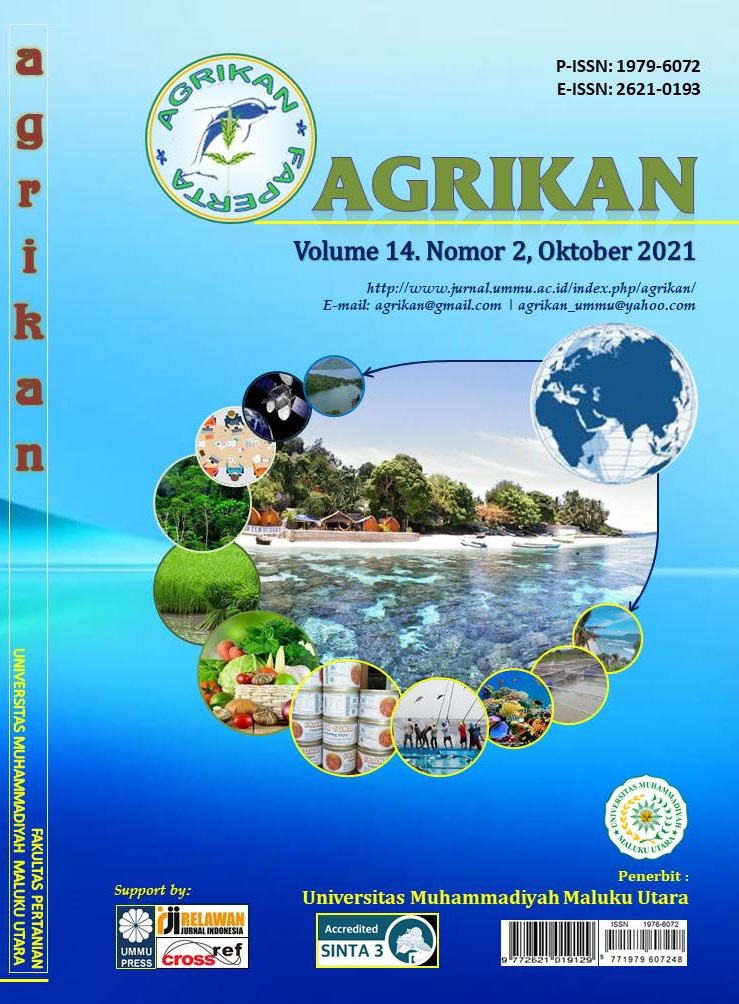Profitability Analysis Of Tilapia (Oreochromis Niloticus) Cultivation Using Recerculated Aquaculture System Technology at Lintang Songo Islamic Boarding School Bantul
DOI:
https://doi.org/10.52046/agrikan.v14i2.783Keywords:
Tilapia, Profiability, RAS Technology, Lintang Songo Islamic, Boarding SchoolAbstract
The Tilapia cultivation uses recirculated aquaculture system (RAS) technology has low water use, saves land and has a larger pond capacity than conventional ponds with the same size, but it requires greater investment and operation costs for the pond. That's why this research was conducted with the purpose to study the profitability or profit level of Tilapia aquaculture using RAS technology. This research was conducted at the Lintang Songo Islamic Boarding School, Bantul. The object of this research are investment costs, fixed costs and variable costs were incurred for tilapia cultivation used RAS technology at the Lintang Songo Islamic Boarding School. The research method was used is a case study method and descriptive analysis with data collection used direct observation, interviews and questionnaires. Data analysis was begun by calculating the total costs of tilapia cultivation used RAS technology and calculated the income obtained from the sale of cultivated tilapia. The last is analyzed break event point, net profit, profit rate, profitability and benefit cost ratio of the business. The results of the research and data analysis show a net profit Rp. 11.197.000, a profit rate of 60.2%, a profitability of 142.6 %, and BCR of 1,6.
Downloads
Published
Issue
Section
License
Copyright (c) 2021 Moh. Taqiyuddin Saleh, Meita Puspa Dewi

This work is licensed under a Creative Commons Attribution 4.0 International License.

This work is licensed under a Creative Commons Attribution 4.0 International License.













